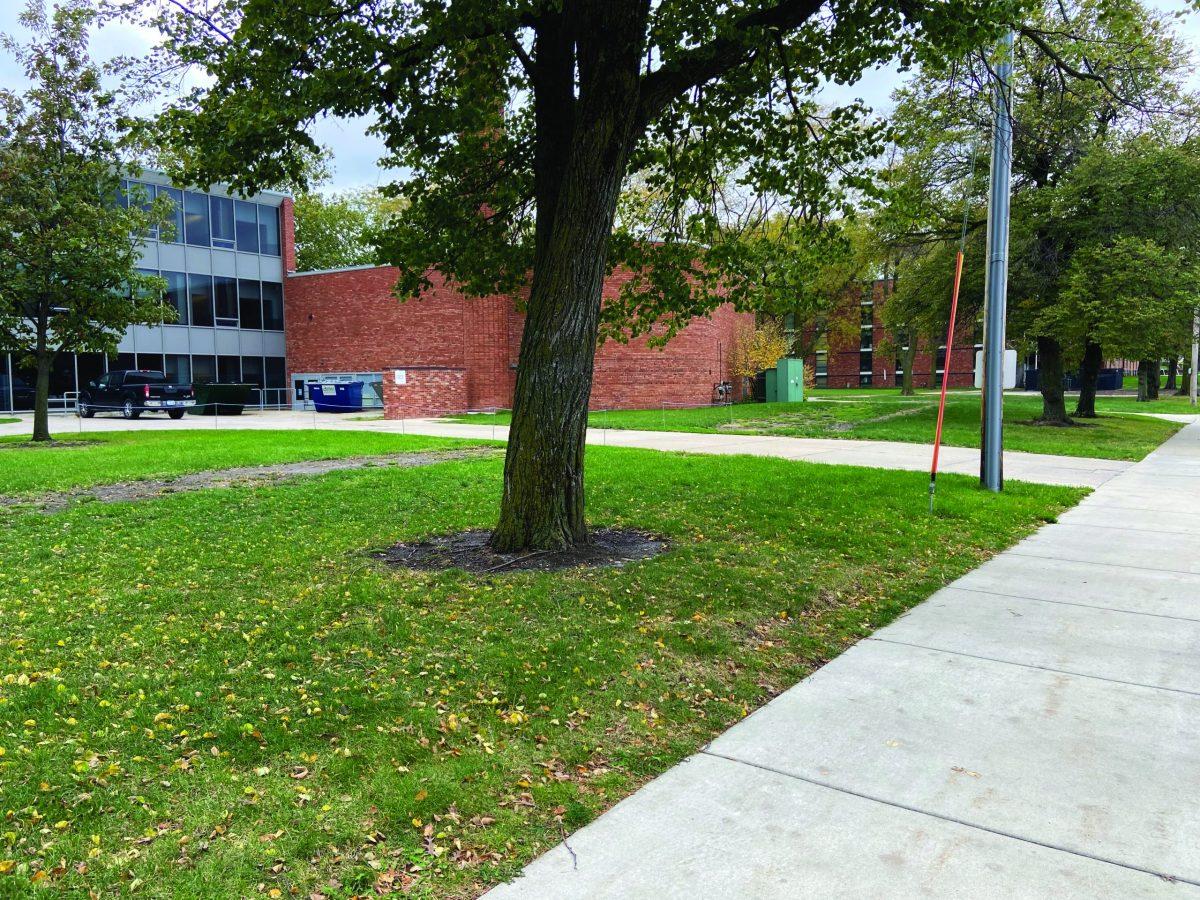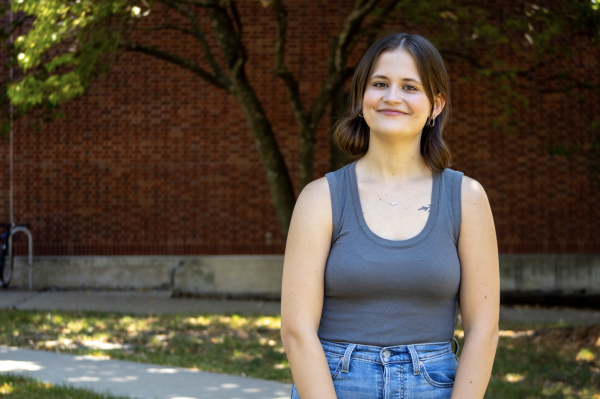In spring 2021, Drake Environmental Action League (DEAL) began work on a project to make Drake’s stormwater more sustainable with the city of Des Moines’ stormwater subsidy program and Drake Facilities. The project proposes the construction of one or two bioretention cells or bioswales on campus between Harvey-Ingham and Herriott Hall where flooding is most noticeable.
“That’s been often like an area where the ‘Drake Lake’ is or when it rains, there’s water that runs off,” Drake Sustainability Coordinator Sophia Siegal said. “And when water runs off, it can pick up, like, fertilizers or chemicals or sediment and then that flows into our stormwater system.”
According to DEAL sustainability liaison Elly Flemming, bioretention cells and bioswales are infrastructure that will help absorb stormwater runoff into the ground. They consist of layers of different materials under contained native vegetation with long roots that can filter contaminants out of runoff water.
“This will have a natural place for the rainwater to collect; that’s why we kind of chose it at a spot where we know frequent flooding occurs on campus, and it’ll look, it’ll basically just look like a pretty little garden to people who don’t know [what it is],” Flemming said. “And there’s going to be a sign, we’re really, really hoping for educational signage similar to the prairie sign. We’re hoping for something similar so people, they may just enjoy that it’s a cute little flower garden, but also that it serves a purpose.”
Siegal said that Drake produces non-point source pollution, which does not come from an identifiable source like a factory and is not regulated by the government. By reducing contamination caused by rainwater running into a creek near Drake, the purpose of this project is to improve water quality in Iowa. According to the Iowa Environmental Council, 92% of phosphorus pollution in the state comes from agricultural and non-point sources.
“Iowa actually suffers from a water quality challenge,” Siegel said. “A large part of that is agricultural runoff, so that could be excess fertilizers or pesticides on farm fields, or it could also be, like, manure.”
Drake contributes to the quality of Iowa’s waterways through the creek located on campus. Siegel said that while it does not have an official name, this creek is referred to as Ravine Creek and eventually flows into another creek, which flows into the Des Moines River. Next semester, Siegel hopes to go through the nomination process for officially naming the creek in order to raise awareness about where Drake’s runoff water is actually going.
“Most people don’t know we have a creek on campus, but it’s kind of a unique feature that we could utilize more as an educational resource,” Siegel said. “As well as kind of acknowledging that we are not the only place connected from the water systems in Iowa.”
Flemming said she first reached out to the city in March 2021, and DEAL has applied to participate in the City of Des Moines’ stormwater subsidy program. They have also met with various professors from across Drake who will potentially be involved with the project. Those in charge of the project are now looking at hiring an engineer or developer, finding out how much student interest there would be in maintaining the project moving forward and applying for a grant that would match up to $100,000 of other contributions.
“Right now, I am working on a grant,” Flemming said. “So we have a pre-application grant narrative due Dec. 3 through the [Iowa Department of Agriculture and Land Stewardship], and they are potentially offering us a pretty large sum of money for this same stormwater project as well, [for] which the infrastructure we’re trying to do is 1-2 [bioretention cells], or bioswales right by Harvey-Ingham.”
Flemming said she hopes to get students involved with seeding and installing plants into the project. Although biocells and bioswales don’t require much maintenance, she also noted that there would be opportunities for students to help with maintenance like watering and weeding.
“If there’s not going to be any interest in student maintenance and maintaining these native vegetation bioswales/biocells, then [the project] kind of will fall flat,” Flemming said.
Moving forward, Flemming is optimistic that the project will be successfully implemented. However, she stressed that there are no guarantees.
“We really hope this comes to fruition, but we can’t guarantee that,” Flemming said. “Grants can be really hard and there’s a lot of stipulations with the Iowa Nutrient Reduction Strategy, which is something we have to follow. So we’re really hoping that this becomes big on campus, but if it doesn’t, it’s important for students to know that this is completely student-initiated.”








